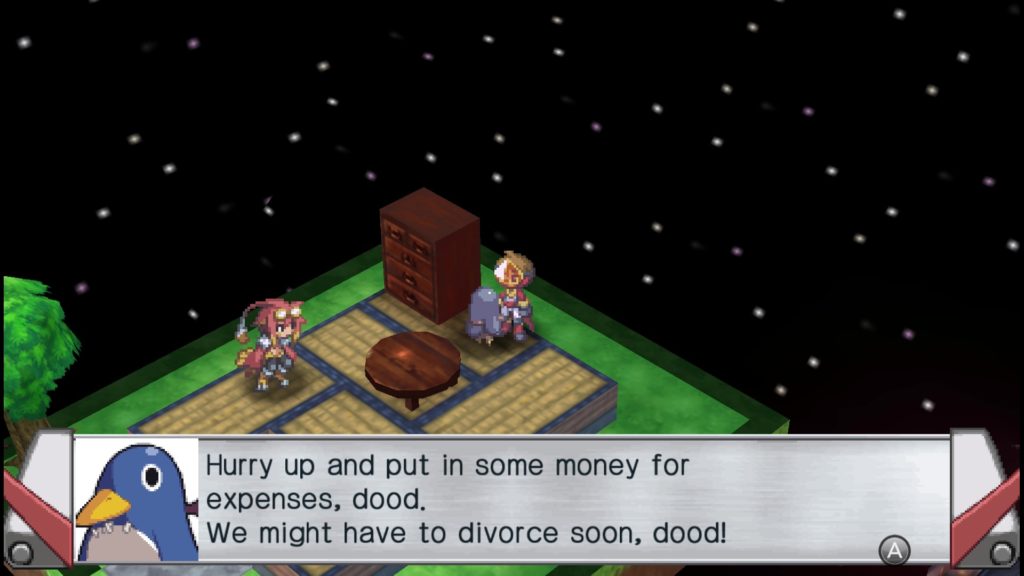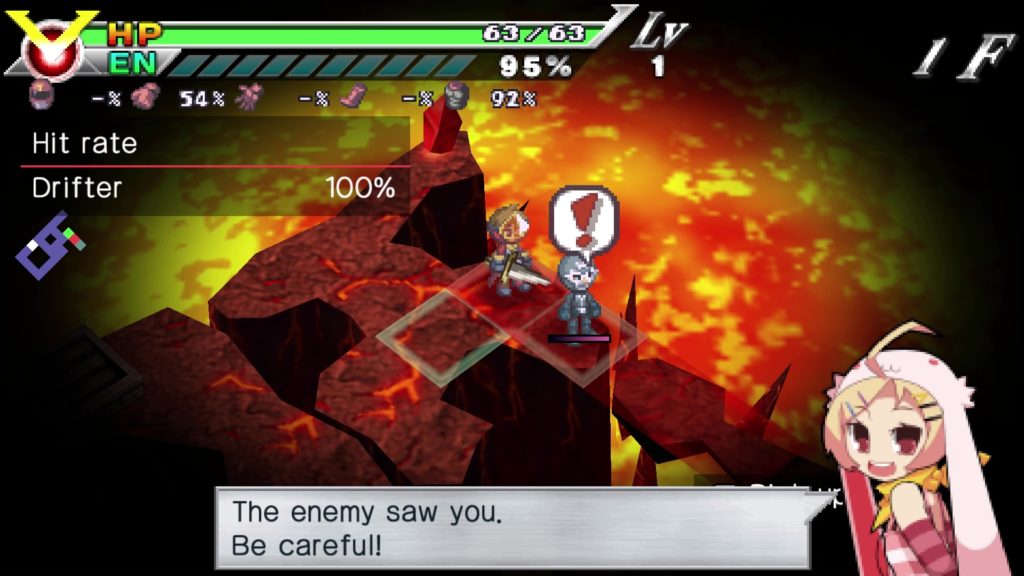Diving back into ZHP: Unlosing Ranger vs. Darkdeath Evilman

We’ve talked before about how much I love Nippon Ichi Software’s more obscure releases, which is why I was so thrilled to see former PSP exclusive ZHP (“Zettai Hero Project”): Unlosing Ranger vs. Darkdeath Evilman making a triumphant return as part of the NIS Classics Collection vol. 2.
It’s been a good few years since I last played this game — and to be honest, I didn’t get that far in it when I did play it first time around — so I was excited to revisit it with a fresh pair of eyes, and with a much better understanding of the mechanics that make it what it is.

For the unfamiliar, ZHP: Unlosing Ranger vs. Darkdeath Evilman is essentially Nippon Ichi Software’s take on the roguelike, featuring Disgaea-style isometric presentation with polygonal environments and pixel-art characters, and a predictably abyssal depth to its character customisation and development. It could easily be an extremely daunting game, but in an attempt to be friendly and accessible to newcomers, it introduces new features at a pleasantly gradual rate, meaning that even a complete roguelike newbie is unlikely to become overwhelmed.
The story behind ZHP: Unlosing Ranger vs. Darkdeath Evilman is that the eponymous villain, Darkdeath Evilman, is attempting to take over the world, starting with kidnapping the mega-powered Super Baby, and, while on his way to the climactic battle with his nemesis, the heroic Unlosing Ranger is hit by a car and killed. Before he dies, he passes his Morphing Belt on to the silent player-protagonist, who is on his way back from the shops when the accident occurs, and requests that he become the new Unlosing Ranger.
As you might expect, the brand new, completely inexperienced Unlosing Ranger almost immediately loses to Darkdeath Evilman in a deliberately 8-bit-style “final” boss battle. Just before he dies, however, he’s snatched away to Bizarro Earth and presented with an opportunity to train himself, assisted by the stroppy Etranger and the ghost of the former Unlosing Ranger, Pirohiko Ichimonji. And from here, it’s up to you to see that he gets himself into a suitable state to take on Darkdeath Evilman once again… and, more than likely, again and again after that a few times, too.

Gameplay in ZHP is split into two main components: wandering around your base and entering dungeons. While at base, you can walk around, talk to people and make use of a range of facilities that gradually unlock as you progress through the game.
Eventually, you’ll need to make choices about which facilities are placed in your base at any given time, as not only will these give you access to benefits between dungeon dives, they’ll also provide you with benefits while adventuring. This is not an issue during the opening of the game, however; your starting facilities are a blacksmith who can upgrade and repair weapons, and your home, where your Prinny wife and beastgirl daughter live, demand living expenses and begrudgingly store your possessions.
The bulk of ZHP’s gameplay takes place in the dungeons, which unlock in a linear sequence as you progress through the story. Once in a dungeon, the action becomes turn-based, with you moving the character around on an isometric grid, performing an action at a time and attempting to make it to the end of your latest challenge.

An interesting twist on the most common “Mystery Dungeon” form of Japanese roguelike is that there’s a strong emphasis on almost stealthy gameplay; many enemies are static on the map and will not acknowledge your presence or approach you until you step into their field of vision, at which point they will begin pursuing you relentlessly. Not only that, but “activated” enemies will also trigger other enemies if they happen to step into their fields of vision — and the death cry of a defeated enemy can also alert enemies they’re in the vision range of, also. These are interesting consideration that you don’t have to bear in mind in most roguelikes.
You can fight in a variety of ways. A simple attack can be performed in the direction you’re facing — changing direction doesn’t take a turn — and this can be bare-handed or use weapons. You can dual-wield weapons, allowing for two attacks in a single turn, but this more quickly drains your endurance.
Endurance is an important consideration because it powers pretty much everything you do, including simple survival. While you have endurance remaining, you’ll gradually heal lost HP with each passing turn, but endurance is also used to perform normal attacks and power special attacks. Special attacks require a turn to “cast” them and then a second turn to “activate” them, so careful strategy is required when attempting to use them; being hit while casting can waste your turn and leave you defenceless.

Thankfully, you have other options. Pretty much anything you pick up can be chucked at enemies, causing varying amounts of damage. Equipment whose condition has dropped to zero as you’ve used it makes for particularly good throwing weapons, but there are also a variety of items specifically designed to be hurled at enemies and inflict status effects. Like in Disgaea, you can even pick up enemies and throw them, but this is more a defensive measure in ZHP; its most common use is to fling them as far away from you as possible while attempting to run away.
Where ZHP is at its most distinctive is in its progression mechanics. We’ll talk in more detail about these another day when I’ve had a bit more opportunity to refresh my memory on how they work, but the most basic part of them is fairly straightforward.
Like in most roguelikes, being defeated in a dungeon causes you to lose everything you were carrying as well as all the levels you gained on that particular jaunt. In ZHP, a failed run isn’t a complete waste of time, however; any temporary levels you gained on a single run are added to your “total level”, which provides you with corresponding increases to your base statistics. In other words, the more you play the game, the more powerful your “level 1” form becomes, meaning that you’ll be able to take on tougher and tougher challenges without breaking a sweat.

While roguelike purists may sneer at this degree of persistent progression in a genre that is normally about losing everything when you fail, you have to remember that this is a Nippon Ichi Software game at heart, and as such gradually beefing up your character to obscene levels of power and completely overwhelming the challenges in front of you is a core part of the fun. It’s no coincidence that this game resembles Disgaea from an aesthetic perspective; much like the classic strategy RPG series, ZHP is as much about seeing how much you can “break” the mechanics as it is enjoying its comedic but heartfelt story.
We’ll talk more about the story and the deeper aspects of the mechanics in a subsequent part of this feature — but suffice to say for now that it’s wonderful for ZHP to be back, and I’m very much looking forward to indulging in that age-old pastime of watching numbers in Nippon Ichi games go up, and up, and up…
ZHP is available now for Nintendo Switch and PC.
Join The Discussion
Rice Digital Discord
Rice Digital Twitter
Rice Digital Facebook
Or write us a letter for the Rice Digital Friday Letters Page by clicking here!
Disclosure: Some links in this article may be affiliate links, which means we may earn a small commission if you make a purchase after clicking on them. This is at no additional cost to you and helps support Rice Digital!
- Letter from the Editor: passing the torch - June 30, 2023
- Super Woden GP 2 is looking promising - June 30, 2023
- Inti Creates is making a 32 bit-style Love Live action platformer - June 26, 2023






